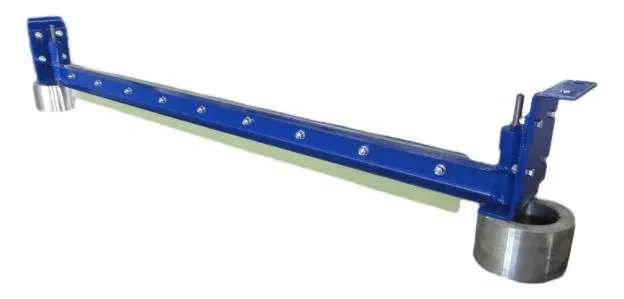 Afrikaans
Afrikaans  Albanian
Albanian  Amharic
Amharic  Arabic
Arabic  Armenian
Armenian  Azerbaijani
Azerbaijani  Basque
Basque  Belarusian
Belarusian  Bengali
Bengali  Bosnian
Bosnian  Bulgarian
Bulgarian  Catalan
Catalan  Cebuano
Cebuano  Corsican
Corsican  Croatian
Croatian  Czech
Czech  Danish
Danish  Dutch
Dutch  English
English  Esperanto
Esperanto  Estonian
Estonian  Finnish
Finnish  French
French  Frisian
Frisian  Galician
Galician  Georgian
Georgian  German
German  Greek
Greek  Gujarati
Gujarati  Haitian Creole
Haitian Creole  hausa
hausa  hawaiian
hawaiian  Hebrew
Hebrew  Hindi
Hindi  Miao
Miao  Hungarian
Hungarian  Icelandic
Icelandic  igbo
igbo  Indonesian
Indonesian  irish
irish  Italian
Italian  Japanese
Japanese  Javanese
Javanese  Kannada
Kannada  kazakh
kazakh  Khmer
Khmer  Rwandese
Rwandese  Korean
Korean  Kurdish
Kurdish  Kyrgyz
Kyrgyz  Lao
Lao  Latin
Latin  Latvian
Latvian  Lithuanian
Lithuanian  Luxembourgish
Luxembourgish  Macedonian
Macedonian  Malgashi
Malgashi  Malay
Malay  Malayalam
Malayalam  Maltese
Maltese  Maori
Maori  Marathi
Marathi  Mongolian
Mongolian  Myanmar
Myanmar  Nepali
Nepali  Norwegian
Norwegian  Norwegian
Norwegian  Occitan
Occitan  Pashto
Pashto  Persian
Persian  Polish
Polish  Portuguese
Portuguese  Punjabi
Punjabi  Romanian
Romanian  Russian
Russian  Samoan
Samoan  Scottish Gaelic
Scottish Gaelic  Serbian
Serbian  Sesotho
Sesotho  Shona
Shona  Sindhi
Sindhi  Sinhala
Sinhala  Slovak
Slovak  Slovenian
Slovenian  Somali
Somali  Spanish
Spanish  Sundanese
Sundanese  Swahili
Swahili  Swedish
Swedish  Tagalog
Tagalog  Tajik
Tajik  Tamil
Tamil  Tatar
Tatar  Telugu
Telugu  Thai
Thai  Turkish
Turkish  Turkmen
Turkmen  Ukrainian
Ukrainian  Urdu
Urdu  Uighur
Uighur  Uzbek
Uzbek  Vietnamese
Vietnamese  Welsh
Welsh  Bantu
Bantu  Yiddish
Yiddish  Yoruba
Yoruba  Zulu
Zulu conveyor lagging
Understanding Conveyor Lagging Importance and Benefits
Conveyor lagging plays a crucial role in the efficiency and longevity of conveyor systems used in a variety of industrial applications. It refers to the material applied to the surface of conveyor rollers and pulleys to enhance friction, reduce wear, and increase the overall performance of the conveyor system. Understanding the significance of conveyor lagging can help businesses improve their operational processes and minimize downtime.
One of the primary purposes of conveyor lagging is to provide additional traction between the conveyor belt and the pulleys
. When the surface of a pulley or roller is smooth, the risk of slippage increases, leading to belt misalignment and inefficient material handling. By applying a lagging material, often made from rubber or ceramic, the grip between the belt and the conveyor components is enhanced, ensuring smooth and reliable operation.Additionally, conveyor lagging helps to protect the pulley from damage. Continuous wear and tear can lead to costly repairs and replacements, especially in harsh environments where materials being transported may cause abrasion. Lagging acts as a protective layer, absorbing impact and minimizing the effects of friction, thereby prolonging the lifespan of the conveyor system.
conveyor lagging

Moreover, the right type of lagging can also improve the overall efficiency of a conveyor system. For instance, ceramic lagging is known for its durability and resistance to wear, making it ideal for applications involving heavy loads or abrasive materials. This not only aids in maintaining operational speed but also reduces the energy consumption of the system, leading to lower operational costs.
Regular maintenance and inspection of conveyor lagging are essential for optimal performance. As lagging materials can deteriorate over time due to exposure to various elements, proactive measures should be taken to replace worn-out lagging. Implementing a routine maintenance schedule ensures that potential issues are identified early on, preventing unexpected breakdowns and costly downtime.
In conclusion, conveyor lagging is an essential component in maximizing the performance and lifespan of conveyor systems. By providing enhanced traction, protecting valuable equipment, and improving overall efficiency, businesses can significantly benefit from investing in high-quality lagging solutions. Understanding its importance can lead to smarter operational decisions and increased productivity in material handling processes.
-
Revolutionizing Conveyor Reliability with Advanced Rubber Lagging PulleysNewsJul.22,2025
-
Powering Precision and Durability with Expert Manufacturers of Conveyor ComponentsNewsJul.22,2025
-
Optimizing Conveyor Systems with Advanced Conveyor AccessoriesNewsJul.22,2025
-
Maximize Conveyor Efficiency with Quality Conveyor Idler PulleysNewsJul.22,2025
-
Future-Proof Your Conveyor System with High-Performance Polyurethane RollerNewsJul.22,2025
-
Driving Efficiency Forward with Quality Idlers and RollersNewsJul.22,2025





























